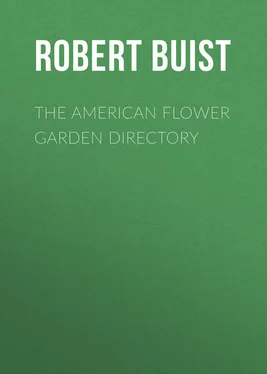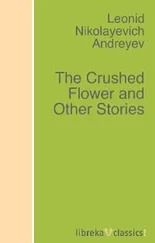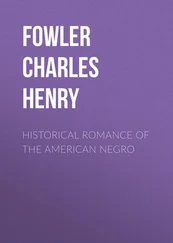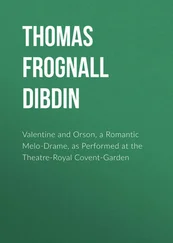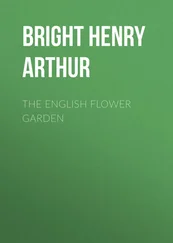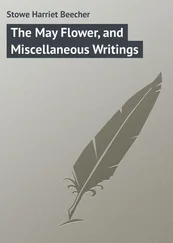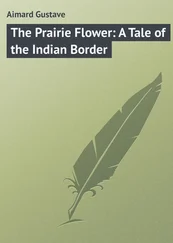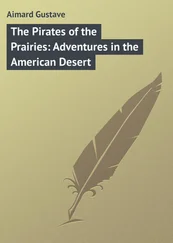Robert Buist - The American Flower Garden Directory
Здесь есть возможность читать онлайн «Robert Buist - The American Flower Garden Directory» — ознакомительный отрывок электронной книги совершенно бесплатно, а после прочтения отрывка купить полную версию. В некоторых случаях можно слушать аудио, скачать через торрент в формате fb2 и присутствует краткое содержание. Жанр: foreign_antique, foreign_prose, на английском языке. Описание произведения, (предисловие) а так же отзывы посетителей доступны на портале библиотеки ЛибКат.
- Название:The American Flower Garden Directory
- Автор:
- Жанр:
- Год:неизвестен
- ISBN:нет данных
- Рейтинг книги:5 / 5. Голосов: 1
-
Избранное:Добавить в избранное
- Отзывы:
-
Ваша оценка:
- 100
- 1
- 2
- 3
- 4
- 5
The American Flower Garden Directory: краткое содержание, описание и аннотация
Предлагаем к чтению аннотацию, описание, краткое содержание или предисловие (зависит от того, что написал сам автор книги «The American Flower Garden Directory»). Если вы не нашли необходимую информацию о книге — напишите в комментариях, мы постараемся отыскать её.
The American Flower Garden Directory — читать онлайн ознакомительный отрывок
Ниже представлен текст книги, разбитый по страницам. Система сохранения места последней прочитанной страницы, позволяет с удобством читать онлайн бесплатно книгу «The American Flower Garden Directory», без необходимости каждый раз заново искать на чём Вы остановились. Поставьте закладку, и сможете в любой момент перейти на страницу, на которой закончили чтение.
Интервал:
Закладка:
Thrips , order Hemiptera , are insects so minute as scarcely to be perceptible to the naked eye. They generally lurk close to the veins of the leaves of plants, and frequently attack esculents. When viewed through a glass, they are seen, when touched, to skip with great agility. The larva is of a high brown, or reddish colour. The thrip has four wings, and walks with its body turned upwards. It frequently attacks the extremities of tender shoots, or young leaves, which become shrivelled, brown, and will rub to dust easily between the thumb and finger. When any leaves or shoots are perceived to be so, if you do not observe the green fly, expect the thrips. They may be destroyed by a fumigation of tobacco, in the same manner as the green fly. By the simple and expeditious method of fumigation, these insects and several others may be destroyed effectually at any time they appear.
Cocus hesperidus , or mealy bug, has appeared in the Hot-houses about Philadelphia within these few years, and, if not instantly destroyed, increases rapidly. It is of a white dusty colour, when broken, of a brownish red, generally covered with down, under which it deposits its eggs; and they, in a few months, come forth in great numbers. The cocus generally is of a dormant nature, but, in warm weather, they may be seen moving rapidly up the stems of the plants. Fumigating has no observable effect on these insects; therefore, as soon as they appear, recourse must be had to other means. The liquid made from the following receipt, is death to any of the Cocus tribe: Take two pounds of strong soap, one pound flour of sulphur, one pound of leaf tobacco, one and a half ounce of nux vomica, with a table spoonful of turpentine, which boil in four gallons of river water to three; then set aside to cool. When boiling, stir it well with a stick, continuing to do so until it is reduced as above. In this liquor immerse the whole plant, drawing it to and fro gently, that the liquor may penetrate every where.
This done, lay the plant on its side, until it begin to dry, then syringe well with clean water, and put it in its respective station. Where a collection of plants is free from any insects of the kind, every plant that is introduced, ought to be minutely scrutinized, that the unclean may be kept from the clean: the above insect will feed almost on any plant, but indulges on Crássulas , any of the bristly Cáctus , Gardènias , and in fact whatever is in the way.
Cocus — , or brown scaly insect, is frequently found on many plants, but we never could perceive that it does any other material injury, than dirtying them. We have always observed, that it is found in winter to abound most in those situations which are most excluded from air; therefore is of less importance than the other species, which eat and corrode the leaves of tender plants. A washing with strong soap suds will destroy them, or the above liquid will do it more effectually. Tie a piece of sponge on the end of a small stick, and scrub every leaf, stem, and crevice. Fumigating destroys the larvæ of this species.
Cocus — , or small white scaly insect, which generally infests Cycas revolùta and circinàlis , the varieties of Nèrium oleánder , Oleas , and several species of Acacias , may be destroyed by washing as above with a sponge, and a strong decoction of tobacco, using the liquid about the warmth of 100°. Being thus heated, it irritates the insect, when, by easing itself from its bed, the fluid passes under it, and causes immediate death. If it is not thus irritated, it adheres so closely to the foliage, that it will keep you at defiance. The under, or dark side of the leaves is its residence; and we have observed a plant in a house where there was only light on one side, with the dark side literally covered, while the light side was clean. So much for having houses with plenty of light. The effects of this insect are of a corroding nature, extracting all the juices from the leaf under it, even straining to the other side; and where they have got to the extremity, the foliage is completely yellow, and of a decayed appearance.
Cocus — , or turtle insect. We have never observed this insect arrive to any extent, but think that the Datura arborea is most infested with it. It is the largest of any genus known amongst us, and very like a turtle in miniature. On lifting it from the wood, to which it generally adheres, there appear to be hundreds of eggs under it, but fumigating completely destroys the larvæ. In our opinion this turtle insect is no other than the old female of the brown scaly insect, which swells to a large size before depositing its eggs. We have frequently observed the insect dead in this enlarged state, and question if this is the last stage of its transmigration. The male insect is winged, and very active in its movements.
OF SHIFTING PLANTS
At this period of the season very little is required to grow Calceolàrias to perfection. They require a few months of the Hot-house, and if the directions given last month were followed up, some of these will have advanced a little in growth. The herbaceous kinds, when grown about one inch high, ought to be divided, and put into four inch pots, sprinkled gently, and kept in the shade until they begin to grow; after which, keep them near the glass, to prevent them from becoming spindly and drawn. Their farther treatment will be observed as they require. This is a beautiful genus of plants, flowering very profusely all summer, and some of them early in spring.
Alstrœmèrias , about the beginning or middle of the month, will have made their appearance above ground. When shot about one inch, turn them out, and carefully shake them clear of earth; and if required, divide the crowns, and put them in as small pots as possible, taking care not to break any of the strong fleshy roots. (For Soil, see Table Конец ознакомительного фрагмента. Текст предоставлен ООО «ЛитРес». Прочитайте эту книгу целиком, купив полную легальную версию на ЛитРес. Безопасно оплатить книгу можно банковской картой Visa, MasterCard, Maestro, со счета мобильного телефона, с платежного терминала, в салоне МТС или Связной, через PayPal, WebMoney, Яндекс.Деньги, QIWI Кошелек, бонусными картами или другим удобным Вам способом.
.) To flower these plants well, they require to be frequently shifted, during their active stage of growth, which must be duly observed. The most of the species of this genus will more than repay the attention, by their abundantly and beautifully spotted flowers. A. flósmartìna , A. Pelegrìna , A. pulchélla , and A. atrópurpurea , are the most splendid. The former flowers very freely. All natives of South America.
Where bulbous roots, such as Hyacinths , Jonquils , Narcissus , Ixias , Lachenàllas , &c. are required to be early in flower, they may, about the beginning or end of the month, be put in the front of the Hot-house, giving very little water until they begin to grow; then water freely, and tie up the flower stems as they advance.
OF CLEANSING PLANTS, HOUSE, &c
This subject ought to be kept constantly in view. However correct every thing may be executed, without that adorning beauty, cleanliness, all will appear only half done. Therefore let all the dead leaves be picked off every day, and with dust and other litter swept out of the house, and when necessary, the house washed, which will be at least once a week. That the foliage of the plants may always appear fresh, syringe them in the evening, twice or three times per week; (when the weather is very cold, do it in the morning.) At present this will in a great measure keep down the insects, and will prove a bane to the red spider.
Читать дальшеИнтервал:
Закладка:
Похожие книги на «The American Flower Garden Directory»
Представляем Вашему вниманию похожие книги на «The American Flower Garden Directory» списком для выбора. Мы отобрали схожую по названию и смыслу литературу в надежде предоставить читателям больше вариантов отыскать новые, интересные, ещё непрочитанные произведения.
Обсуждение, отзывы о книге «The American Flower Garden Directory» и просто собственные мнения читателей. Оставьте ваши комментарии, напишите, что Вы думаете о произведении, его смысле или главных героях. Укажите что конкретно понравилось, а что нет, и почему Вы так считаете.
